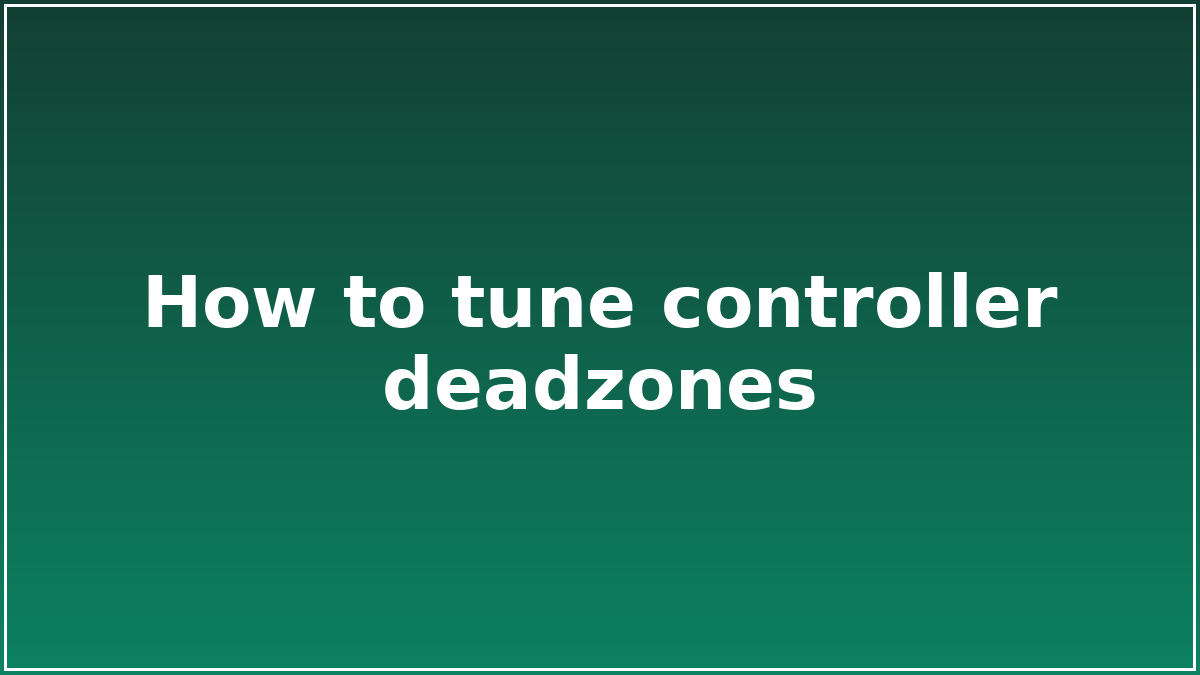How to tune controller deadzones

Prevent drift while keeping snappy input.
Proper deadzones prevent drift while keeping inputs responsive.
Steps
- Identify the smallest stick movement before drift appears (in a tester app or in‑game tool).
- Set inner deadzone just above that point; keep outer deadzone modest to retain full throw.
- Adjust response curve: linear for shooters, exponential for driving/flight for finer control near center.
- Re‑test in a live match and iteratively tune.
Checklist
- Disable platform‑level curves when tuning in‑game
- Save separate profiles per genre
Troubleshooting
- If micro‑adjustments feel jittery, raise inner deadzone by 1–2%
- For sluggish turns, lower outer deadzone and slightly increase sensitivity
FAQ
Will this void my warranty?
No; follow the vendor’s documented limits and procedures.
How do I measure success?
Use a repeatable 5‑minute test and track frame‑time or load times before/after.
Advanced tips
- Work in a repeatable test scene; change one variable at a time.
- Use frame‑time graphs over average FPS to spot micro‑stutter.
- Save per‑game profiles so updates don’t overwrite your settings.
Common mistakes
- Stacking multiple sharpening passes (can cause shimmer).
- Using unlimited FPS on VRR displays (can raise latency and temps).
- Enabling conflicting options at OS and in‑game level.
Cheatsheet
How to tune controller deadzones — quick wins you can try first:
- Lower volumetrics and shadows before textures.
- Cap FPS 2–3 below refresh for smoother frame‑time.
- Prefer in‑engine upscalers over driver‑level scaling.
Source
Primary documentation and testing relevant to "How to tune controller deadzones".